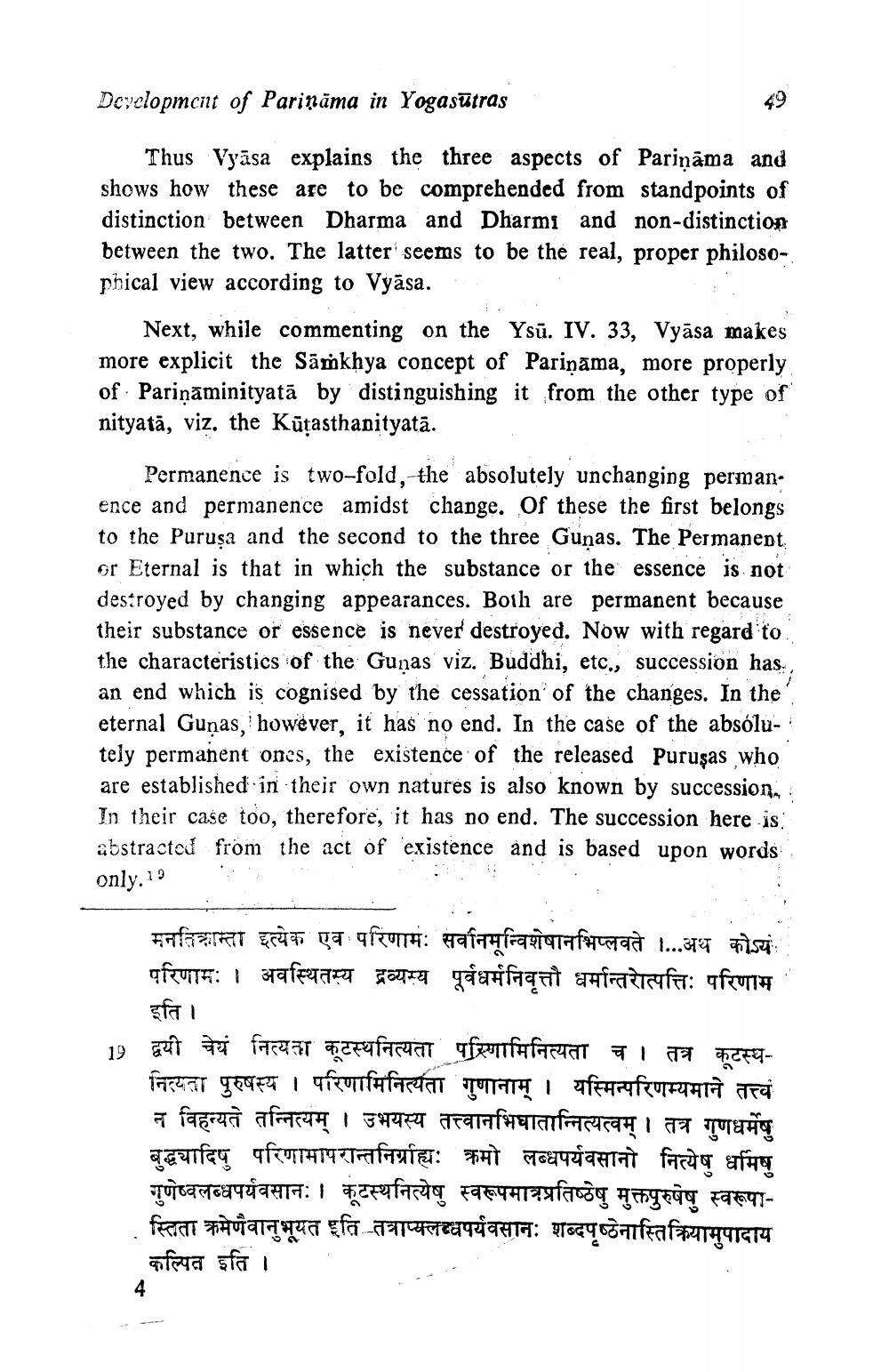________________
Dcyclopmcit of Pariņāma in Yogasūtras
Thus Vyāsa explains the three aspects of Pariņāma and shows how these are to be comprehended from standpoints of distinction between Dharma and Dharmi and non-distinction between the two. The latter' seems to be the real, proper philosophical view according to Vyāsa. .
Next, while commenting on the Ysū. IV. 33, Vyāsa makes more explicit the Sārkhya concept of Pariņāma, more properly of Pariņāminityatā by distinguishing it from the other type of nityatā, viz. the Kutasthanityata.
Permanence is two-fold, the absolutely unchanging permanence and permanence amidst change. Of these the first belongs to the Puruşa and the second to the three Guņas. The Permanent or Eternal is that in which the substance or the essence is not destroyed by changing appearances. Both are permanent because their substance or essence is never' destroyed. Now with regard to the characteristics of the Gunas viz. Buddhi, etc., succession has., an end which is cognised by the cessation of the changes. In the eternal Guņas, however, it has no end. In the case of the absolu- : tely permanent ones, the existence of the released Puruşas who are established in their own natures is also known by succession. In their case too, therefore, it has no end. The succession here is. abstracted from the act of existence and is based upon words only.10
19
मनतिकान्ता इत्येक एव परिणामः सर्वानमून्विशेषानभिप्लवते ।...अथ कोऽयंः परिणामः । अवस्थितस्य द्रव्यम्य पूर्वधर्मनिवृत्तौ धर्मान्तरोत्पत्तिः परिणाम इति । द्वयी चेयं नित्यता कूटस्थनित्यता परिणामिनित्यता च । तत्र कूटस्थनित्यता पुरुषस्य । परिणामिनित्यंता गुणानाम् । यस्मिन्परिणम्यमाने तत्त्वं न विहन्यते तन्नित्यम् । उभयस्य तत्त्वानभिघातान्नित्यत्वम् । तत्र गुणधर्मेषु बुद्धयादिषु परिणामापरान्तनिर्माह्यः क्रमो लब्धपर्यवसानो नित्येषु धर्मिष गुणेष्वलब्धपर्यवसानः । कूटस्थनित्येषु स्वरूपमात्रप्रतिष्ठेषु मुक्तपुरुषेषु स्वरूपास्तिता क्रमेणैवानुभूयत इति तत्राप्यलब्धपर्यवसानः शब्दपृष्ठेनास्तिक्रियामुपादाय कल्पित इति ।




